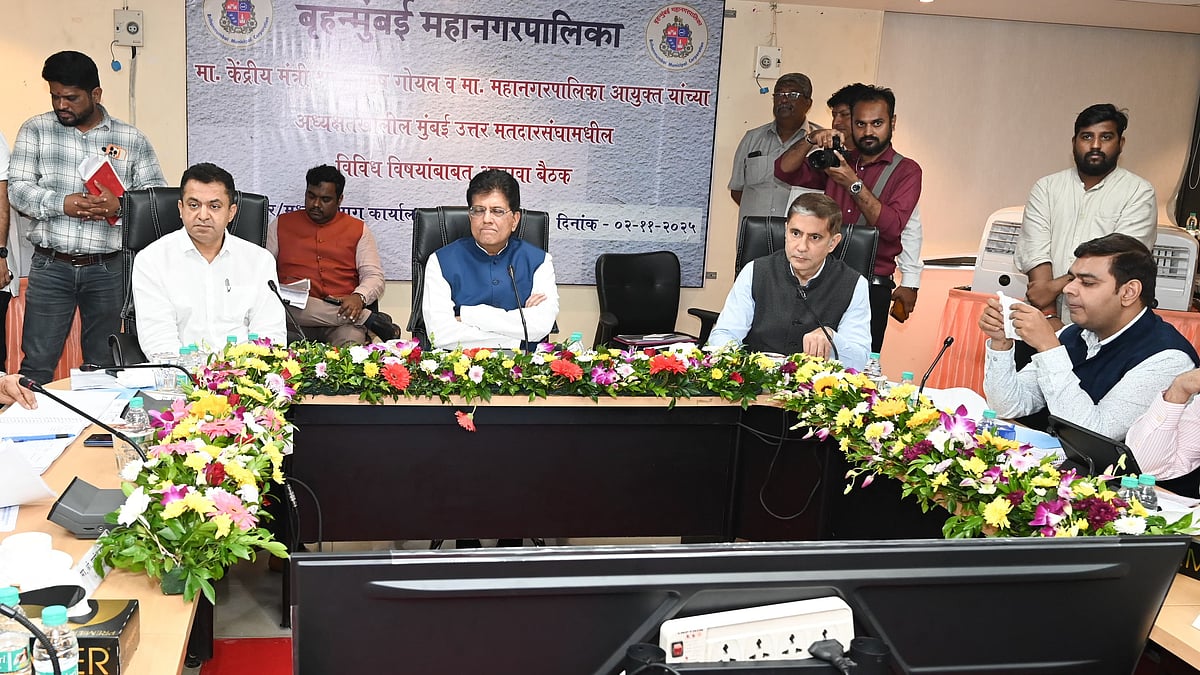The Reserve Bank of India (RBI) on Friday kept the benchmark interest rate unchanged at 4 percent and decided to continue with its accommodative stance despite rising inflation.
This is the 11th time in a row that the Monetary Policy Committee (MPC) headed by RBI Governor Shaktikanta Das has maintained the status quo. RBI had last revised its policy repo rate or the short-term lending rate on May 22, 2020, in an off-policy cycle to perk up demand by cutting the interest rate to a historic low.
MPC has decided to keep the benchmark repurchase (repo) rate at 4 percent, Das said while announcing the bi-monthly monetary policy review. Consequently, the reverse repo rate will continue to earn 3.35 percent interest for banks for their deposits kept with RBI.
This is the first MPC meeting of the current financial year.
India Inc responded favourably to the RBI announcement. The PHD Chamber welcomed the status quo by the Reserve Bank of India's MPC. The accommodative stance by the RBI is in line with the PHD Chamber’s expectations to strengthen and support the business and consumer sentiments as well as the economic recovery, said Pradeep Multani, President, PHD Chamber of Commerce and Industry.
Aditi Nayar, Chief Economist, ICRA
The MPC's revised GDP and inflation forecasts of 7.2 percent and 5.7 percent, respectively, for FY2023 (with crude averaging at US$100/barrel) are echoed by our own projections (7.2% and 5.6 percent, respectively, with crude @US$105/barrel). Our projection of the CPI inflation of 6.3 percent for Q1 FY2023, assumes a full pass through of the pending transmission of the crude price hike to petrol and diesel, without any excise cut.
Our assessment suggests that the estimates of tax revenues made in the FY2023 BE are rather conservative in light of the substantial overshooting that has taken place in FY2022. This offers space for a rollback in excise duties back to the pre-pandemic levels, to moderate the anticipated uptrend in inflation and prevent excessive tightening of policy rates as well as the household budgets and corporate margins
Aishvarya Dadheech, Fund Manager, Ambit Asset Management
RBI continues to remain fairly accommodative with no change in key policy rates (status quo for consecutive 11th MPC meet). RBI increases its inflation target by 120 bps to 5.7 percent, due to the ongoing challenge of geopolitical turbulence of Russia –Ukraine war and due to the COVID lockdown in China. RBI is leading from the front by assuming a higher crude projection at $100/bbl which has led to a rise in inflation forecast & lowering of GDP growth projections (by 60 bps to 7.2 percent) for FY23. RBI is actually factoring conservative estimates, and it will have more leeway to play policy normalization in coming times.
Nevertheless, as the geopolitical tensions settle & crude oil cools, there are upside risks to growth. Higher Inflation is on account of global supply-side disruption rather than demand-led, which is the key reason for RBI to maintain its stance status quo.
Anil Gupta, Vice President & Co-Group Head, ICRA
Introduction of the Standing Deposit Facility: With 80 percent of surplus liquidity being absorbed under VRRR at rate closer to repo rate of 4.0 percent, the introduction of SDF at 3.75 percent will improve the returns on the balance liquidity that was being placed by banks at reverse repo rate of 3.35 percent. This could also lead to an increase in overnight call money rates and will be positive for profitability of banks. This will however also lead to a further increase in short-term rates such as T-bill and consequent increase in borrowing costs linked to such rates.
Individual Housing Loans: Rationalisation of Risk Weights: Supported by the competitive mortgage rates from lenders, the demand for home loans has been robust and though the property prices have been on an increasing trend.
SLR Holdings in HTM category: Increase in HTM limits by 1 percent could create an additional headroom of Rs. 1.6-1.7 trillion for banks to hold the government securities without marking them to market in a rising bond yield scenario and thereby preventing any losses. This could improve the appetite of banks for government securities and facilitate the large borrowing programme of central and state governments while moderating the rising in yields. However given the overall size of the government borrowings, the absorption of the large supply could remain a challenge.
Anurag Mathur, CEO, Savills India
The accommodative stance and unchanged benchmark lending rates reflect the RBI’s confidence in strong fundamentals of the Indian economy. However, the governor has indicated towards a withdrawal of accommodation in future to keep inflation within the tolerance levels. Furthermore, the real GDP growth rate for FY23 has been projected at 7.2 percent.
On the real estate front, recent clarity with respect to FDI permissibility in rent or income on lease of a property, not amounting to transfer, was encouraging for institutional investors especially in the commercial office segment. Meanwhile, as employees of India Inc. return to working physically from offices in increasing numbers, H1 2022 is expected to witness significant traction in leasing activity across major cities of the country.
Ashish Jain, Managing Director, Star HFL
Once again, RBI has rightfully decided not to rock the boat as the economy has started to emerge from the clutches of COVID-19 pandemic. Less accommodative stance and narrowing of LAF is attributable to the global uncertainty and effects on fuel prices. One feels that this would be ultimate/penultimate event of keeping benchmark lending rate unchanged. We can expect northward movement from hereon as the focus should now shift to containing expected Inflationary pressures. Home borrowers having floating rate loans should grace for increase in rate of interest, consequently resulting in either increase in emi or in loan tenure. One can consider the pros and cons of shifting to fixed rate regime after careful consideration on cost-benefit post scanning the industry offerings,
Atanu Kumar Das, MD and CEO Bank of India
Policy continues to have a ‘feel good’ stance from the point of view of durable recovery process. The projected numbers perhaps warrant more frequent revisits in the face of dynamically evolving operative environment, within and outside India.
Atul Kumar Goel, MD and CEO, Punjab National Bank
To impart flexibility in liquidity management, Reserve Bank of India has tweaked its liquidity framework, introducing standing deposit facility through which it will absorb surplus liquidity. As the economy is limping back to normalcy RBI restores, LAF corridor to 50 bps as in pre-covid level with SDF as floor at 3.75 percent and MSF as ceiling at 4.25 percent which will also provide financial stability. Increasing SLR holding in Held-to-Maturity category by 100 bps till March 31, 2023 banks will be able to better manage their investment portfolio.
With diversification in financial industry, RBI proposal of a panel to review status of customer service at RBI-regulated entities was a necessary step. Cardless cash withdrawal now being available at all bank branch and ATMs via UPI will help prevent frauds and improve ease of transactions. Rationalisation of risk weights for individual housing loans to be extended till March 31, 2023 which will provide impetus to Housing loan demand.
Dinesh Khara, Chairman, SBI
The RBI monetary policy announcement is a pragmatic assessment of the current uncertain economic environment. The RBI has rightfully re-calibrated the growth and inflation numbers and announced a slew of measures to support the government borrowing program in a non-disruptive manner. The measures to allow inter-operability in card-less withdrawal at banks will give a further impetus to QR code-enabled payments. The decision to set up a robust governance structure for digital payments is a logical corollary of this move. Overall, the policy announcement now prepares us for a world after COVID.
Dr. Arun Singh, Global Chief Economist, Dun & Bradstreet
The Standing Deposit Facility (SDF) at 25 bps below policy rate is transformative. This effectively transfers liquidity management control from the RBI to banks as they can now manage liquidity without collateral. This will also enable faster policy transmission. In effect, there is a 40 bps increase in the interest rate as banks will deposit excess funds with the RBI at a 40 bps higher rate. The overnight money market rates are set to go up by 40 bps with immediate effect.
D.R.E Reddy, CEO and Managing Partner, CRCL LLP
RBI’s accommodative stance is a welcome move to revive and sustain growth. While the Indian economy is steadily reviving from pandemic led contraction, recent geo-political tensions has led to increase in price of the several commodities such as oil and natural gas, wheat and corn, edible oil, fertilizer, milk, chicken, poultry. The ongoing conflicts has brought in risk of slow growth and higher inflation. Given the scenario of increasing food and crude oil prices, we may see prolonged supply disruptions which will further harden food prices globally. Sharp increase in international prices implies increase in rates across manufacturing, agriculture and services.
Dhaval Ajmera, Director, Ajmera Realty & Infra India
This is an assertive move despite domestic inflationary pressures and an uncertain global geopolitical environment. With an objective to manage liquidity, RBI has kept the reverse repo rate unchanged by 3.35 percent. Real Estate being one of the rate sensitive sectors, welcomes the status quo. We expect demand side buoyancy to remain on the back of continuing lower housing loan rate.
Dr. Ravi Singh, Vice President and head of Research, ShareIndia
RBI monetary policy has fallen much within the expectations of a dovish stance in view of the current crisis and maintains it’s pro-growth outlook. The geopolitical scenario on the global front and soaring inflation have led the RBI to lower its growth forecast to 7.2 percent from 7.8 percent and an increase in the inflation forecast for the current FY. However, the strong Indian forex reserves and a stable financial sector is providing some relief to the dismay. The unchanged repo rate will provide more elbow room to the homebuyers and helps in the revival of the realty sector. To curb the uncontrollable inflation, RBI has increased the reverse repo rate and sharp increase in the inflation projection has hinted towards a possible tightening in the near future.
Garima Kapoor, Economist, Elara Capital
Amid increased uncertainty regarding the outlook for inflation and growth owing to Russian-Ukraine crisis, the MPC today decided to stay course on its pro-growth stance even as evolving global dynamics compelled an upward revision to its inflation projection and a return to pre-pandemic policy rate corridor. With recovery in Indian economy still at a nascent stage and risks to growth enhanced despite elevated inflation, we expect MPC to move to a neutral stance in August policy and anticipate a repo rate hike in H2FY23. Amid inability to explicitly support the government borrowing program, the RBI enhanced HTM limit by 100 bps, which could calm the bond markets despite a sharp increase in inflation forecast.
Harresh Mehta, Rohan Lifescapes
The recently announced monetary policy is highly commendable when it comes to providing support to India’s GDP growth. RBI’s move to keep the repo rate unchanged and hike reverse repo rate by 40 bps contain inflation and maintain liquidity will help in keeping the sentiment optimistic which is very much needed in order to promote the growth of the housing market in India. With the current geopolitical crisis, the sector is facing the brunt and with such decisions it will boost the growth of the sector in a positive way.
HP Singh, Chairman & Managing Director, Satin Creditcare Network
The Reserve Bank of India’s Monetary Policy Committee (MPC) was again faced with the quandary of the ‘growth-inflation trade-off’. Commodities prices in the domestic market have increased manifold because of disruptions in the global supply chain amid the Russia-Ukraine conflict and the economic growth has already taken a toll since the pandemic started. Though it is not surprising that rates have been left unchanged, a 25-basis point (bps) hike seemed likely in the face of rising inflation numbers. We feel it is a matter of time the central bank hikes key lending rates. With the central bank maintaining status quo yet again on key policy rates, borrowers will continue to pay low rates on their loans.
Indranil Pan - Chief Economist, YES BANK
Amidst the 'tectonic' shifts in global conditions, RBI has taken more than one step towards preparing the market for an eventual increase in the repo rate. This position is made clear as the governor indicated that the order of preference for RBI now is inflation, growth and financial stability, rather than the post COVID-19 preference of preserving and supporting growth momentum. The process of neutralizing monetary policy had already started with withdrawal of ultra-comfortable liquidity. In this policy, the operative rate was increased by 40bps with the institutionalization of the Standing Deposit Facility. With this, RBI has almost buried the reverse repo as an instrument. Towards the objective of an orderly completion of the government’s borrowings, the HTM limit was increased by 1% to 23%. Overall, we now expect the stance to be made 'NEUTRAL' in June and the first repo rate increase can come through in August.
Juzar Khorakiwala, IMC President
The Governor has delivered a very balanced, forward looking stable policy. No changes in rates fosters well for supporting economic growth in global turbulent times. Move to increase HTM category limits for banks will stabilize Gsec borrowing rates on one hand and also prevent MTM losses. Support for housing loans and SDF at banks discretion will boost liquidity support for a longer time for banks. Withdrawal of excess liquidity of 8 lac crs in a calibrated and non-disruptive manner infuses confidence in financial system. Overall a long term definitive stability and growth drive policy.
Jyoti Prakash Gadia, Managing Director, Resurgent India
Despite facing huge challenges of inflation and uncertainties,the RBI has exhibited a note of faith and optimism by keeping the policy repo rate unchanged. To deal with strenuous emerging scenarios ,the RBI has rightly chosen to have a less accommodative stance with emphasis on a closer and continuous monitoring of inflation, which is expected to maintain stability while supporting resilience and growth.
Recognising the existence of surplus liquidity in the system, the RBI decision to suitably tweak the reverse repo rate and continue the tools and mechanism of VRRR and VRR to absorb liquidity are the right steps on expected lines .
Kamal Khetan, Chairman and Managing Director, Sunteck Realty Ltd
Today's announcement by the Reserve Bank of India to rationalize the risk weightage on housing loans and link them to loan-to-value (LTV) ratios till March 2023, will boost the nation’s real estate sector. This announcement will encourage banks to continue lending more to individual homebuyers without feeling the stress on their balance sheets. It will effectively result in higher credit flow to the housing sector and eventually make the residential segment a lucrative investment for aspirational homebuyers.
Kaushal Agarwal, Chairman, The Guardians Real Estate Advisory
The RBI played the role of the Good Samaritan by maintaining the status quo on rates despite inflationary pressure. There may be criticism from a macro-economic perspective, but we need to understand the fact that the RBI is playing a complex game of balancing growth with inflationary pressure. This could be elucidated from the fact that despite geopolitical pressure, the RBI had decided to hold its key lending rates steady at record low levels for the 11th straight meeting to support a durable recovery of the economy from the COVID-19 pandemic. From a real estate perspective, this is good news for home buyers as no change in the repo rate means home buyers can avail the decadal low interest rate for their new home purchases. At the same time, this will also be the last bus to buy property at the best price proposition as we anticipate that not only the interest rates but property prices are also going to rise by the next quarter.
Lakshmi Iyer, Chief Investment Officer (Debt) & Head Products, Kotak Mahindra Asset Management Company-
The policy left key rates unchanged, however has introduced SDF at 3.75 percent this effectively means the overnight rates will Have a floor of 3.75 percent ( rise by 40bps) This policy, in some sense, is a Segway to tightening policy rates in the coming months. Expect yields to rise across the curve to reflect the policy stance. Key to see for longer end of The curve is if RBI actually walks the talk by Announcing OMO/ OT to anchor long bond yields.
Madan Sabnavis, Chief Economist, Bank of Baroda
The credit policy has surprised the markets with aggressive changes in projections for both GDP and inflation. For GDP growth it is 7.2 percent (Bank of Baroda: 7.4-7.5 percent) while inflation has been increased to 5.7 percent (Bank of Baroda: 5.5-6 percent). There is a clear hint that the accommodative stance though retained will change as there will be a gradual withdrawal of liquidity keeping in mind the trends in inflation. The interesting introduction of the SDF notwithstanding the high level of bonds held by RBI does indicate that the overnight reverse repo would no longer be attractive as the SDF gives higher return. These are clear indications of the repo rate being increased during the course of the year and we do expect at least 50 bps increase this year. The markets have already reacted with the 10-year bond going up past 7 percent and we expect the rate to go up to 7.25 percent this year.
Manoj Trivedi, Co-Founder, Jama Wealth, SEBI Registered Investment Advisor.
The monetary policy is largely on expected lines. All key rates remain unchanged and the stance continues to be accommodative, although interest rates might edge up towards the later part of the year. RBI is being cautiously optimistic while remaining cognizant of the challenges ahead. LAC is a positive in the long run, as liquidity will be dynamically managed. There is no attempt to aggressively contain inflation now at the cost of growth. The growth estimate is conservative. RBI is not only sensitive to market needs but has been explicitly committed to do what it takes to support the Indian economy, without caring for "rule books"
On stock markets, we believe the impact of today’s announcement will be at best for one or two days. Markets will continue to anticipate and react to changes on a daily basis. We continue to be bullish on the Indian stock markets over the long-term.
Prasenjit Basu, Chief Economist, ICICI Securities
The MPC sensibly decided to keep monetary policy accommodative despite inflation being marginally above its tolerance band. Two good reasons justify the policy: (a) inflation is high partly because of (external) supply shocks, so reducing aggregate demand (through monetary tightening) will not address the issue; (b) there is a considerable output gap, with the economy having contracted 6.6 percent in FY21, and estimated to have grown 8.9 percent in FY22 (far from closing the gap, in an economy with potential growth of 7 percent annually). Staying accommodative is thus the right approach: loan growth needs to accelerate to enable a rebound in domestic demand, but the RBI will also withdraw accommodation tactically if inflation gets too far from the target.
Prithviraj Srinivas, Chief Economist, Axis Capital
The RBI has changed its stance to "more hawkish" and the increase in inflation forecast is a bit more than expected. The review shows the RBI is ready to steer monetary policy out of crisis level accommodation.
Pritam Chivukula, Co-Founder & Director, Tridhaatu Realty and Treasurer, CREDAI MCHI
For the first time since the pandemic, inflation has emerged as a bigger concern than growth for the RBI and therefore the decision was on the expected lines. The inflationary pressure is due to macro economic factors like the Russia- Ukraine war, disruptions of supply chain due to Covid and increase in wholesale commodity prices. Thus, by keeping the rates unchanged RBI has indicated that the domestic consumption is not to be blamed for the inflationary pressure and thus not burden the common man with higher interest rates. This will continue to boost the India consumption story and give a boost to the GDP of India.
Rahul Pande - Director, Justo Realfintech Pvt. Ltd.
The move by the RBI to maintain a status quo was on expected lines due to the growing uncertainties in the market. Lower home loan interest rate was one of the major factors for pushing real estate sales in the last two years of the pandemic. The decision will further help boost the confidence of new homebuyers, who would still want to avail the benefits of reduced interest rates before the developers pass on the additional burden of input costs to the homebuyers.
Raghvendra Nath, Managing Director – Ladderup Wealth Management
Lower growth forecast, raising inflation forecast and a spike in commodity prices due to the on-going geopolitical unrest, does not come as a surprise. In order to maintain current growth environment, RBI has continued with an accommodative stance. However, with a caveat, that it might withdraw its accommodative stance to ensure inflation remains within the target level. If RBI follows the path of Western Central banks and raises rates, then the existing capex plans in pipeline might be impacted.
Rajiv Agarwal, Operating Partner, Infrastructure – Essar and Managing Director, Essar Ports
The RBI policy was largely on expected lines with key policy rates kept unchanged and maintaining an ‘accommodative’ stance despite the rising inflation. Recognizing the concerns around inflation due to elevated crude oil prices, RBI has taken the necessary precautions and remains mindful of anchoring these expectations. Normalisation of Liquidity Adjustment Facility (LAF) corridor to pre-pandemic levels of 50bps and the tweaked liquidity management framework, introducing the Standing Deposit Facility at the lower end of the interest rate corridor will enable financial stability and support economic activity.
Rajiv Sabharwal, MD & CEO, Tata Capital
RBI keeps the rates unchanged and continues with its accommodative stance. This shows RBI’s resolve to support durable growth. RBI lowers the growth estimates for FY 23 which reflects the downside risks and evolving uncertainties. The inflation trajectory is showing a strong northbound bias. The expectation of softening the core inflation was derived from moderation of food inflation has been dissipated by the volatile crude prices, currency pressures and elevated input cost. The RBI will closely monitor emerging data points. With the introduction of the Standing Deposit Facility (SDF), the RBI has restored the LAF corridor to pre-pandemic levels. The SDF will be put to use for liquidity absorption and comes as an additional tool for the overall liquidity management framework. The extension of rationalised risk weights for individual housing loans till March 2023 will incentivize the flow of credit in the economy.
Rajiv Shastri, Director and CEO, NJ AMC
As expected, the RBI has kept policy rates unchanged and the policy stance remains accommodative as well. This reflects the reality that inflation is driven by the supply side which monetary policy cannot address directly. Monetary tightening in this environment can cause a recession and we're happy that the RBI stood it's ground despite widespread pressure to act.
Rajesh Bhatia, MD & CIO, ITI Long-Short Equity Fund
Monetary policy outcome was largely in line with our expectations. RBI highlighted emerging downside risks to growth while also pointing to upside pressure on inflation trajectory. We had anticipated a possible tinkering in the reverse repo rate, which has now been rendered defunct with the introduction of the new Standing Deposit Facility (SDF) rate as the floor for the Liquidity Adjustment Facility (LAF) corridor. Going forward, we expect that the growth risks would offset inflation concerns for coming months with the first rate increase possibly in Q3. Adverse oil price movements form key risk to our view
Rajni Thakur, Chief Economist, RBL Bank
RBI continues on its exemplary act of balancing the contrasting pulls of its key objectives viz; price stability, growth support and easy financial conditions. While the key policy rates remain unchanged, restoration of LAF corridor to 25 bps below and above Repo rate, has effectively pushed up the short term rates by 40-50 bps. Similarly, while the monetary policy stance continues to be ‘accommodative’, the accompanying statement mentions its focus on ‘withdrawal of accommodation’ to match up with rising price pressures. Combined with substantial upwards revision of inflation forecasts for the current fiscal year to 5.7 percent, RBI has, to a large extent, re-aligned its policy to evolving market conditions and also signalled rate hikes over the year. Given the current macro dynamics, MPC announcements were a tight rope walk that has delivered on re-calibrating growth-inflation projections, signalling impeding hikes and still buying time to hike lending rates. With multiple risks on both inflation and growth trajectory in the current fiscal year, we expect two reluctant rate hikes, most likely starting in second quarter. Combined with gradual and calibrated liquidity withdrawal, we nevertheless, expect financing conditions to still remain easy over the full year, to support economic activities.
Ramani Sastri - Chairman & MD, Sterling Developers Pvt. Ltd
RBI's decision to keep policy rates unchanged will continue to improve sentiments in the real estate sector and signals the government’s focus on driving consumption. This will also provide the required fuel for the growth of the economy along with the real estate sector, which is allied with several other industries. For home buyers, this decision will help reinstate confidence and further access to affordable home loans and help foster housing demand. The low interest rates have been a crucial factor in the revival of the demand in the real estate sector in recent times and hence upsetting the current momentum would have been highly detrimental to the overall economic recovery. Over the last few quarters, there has been a fundamental change in buyers’ expectations and attitude towards homeownership, which has resulted in the residential real estate sector perform exceedingly well across all segments. It is imperative for the government to pay special attention to the real estate sector and have provisions for its well-being in the near future.
Ramesh Nair, CEO, India and Managing Director, Market Development, Asia, Colliers
RBI continues to keep the repo rate unchanged for the 11th time in a row, at 4 percent, keeping an ‘accommodative’ stance during its first monetary policy meeting for FY 2022-23. This will greatly help the economy recover to pre-COVID-19 levels at a time when the economy is steadily gaining ground. The geopolitical scenario at the global front and other challenges have led the RBI to lower its growth forecast to 7.2 percent from 7.8 percent for FY2022-23. However, the Indian economy appears to be well placed to withstand the shock supported by its forex reserves and stable financial sector. From a real estate perspective, the unchanged repo rate will continue to provide elbowroom to homebuyers, since home loan rates are at a record low. The housing sector saw a revival in 2021 and the continued low home loan rates can further propel homebuyers’ sentiments. The RBI hiked its reverse repo rate, which was expected due to inflationary tendencies seen in the economy.
Ram Raheja, Director, S Raheja Realty
RBI’s move to keep repo rate unchanged and hike reverse repo rate by 40 bps contain inflation and maintain liquidity will help in keeping the sentiment optimistic. For the real estate sector, the pandemic followed by the current global political crisis is a silver lining. Being a tangible asset and safe haven investment, people will continue to divert their funds to real estate. Residential real estate will witness a further impetus due to overall uncertainty leading people to return to focus on basic requirements like spacious living spaces. Investors will be closely watching the geopolitical conditions to further estimate growth and evaluate investment avenues.
Ravi Singhal, Vice Chairman, GCL Securities
RBI monetary policy is as expected, with the accommodative stance remaining in place. However, the reverse repo rate has been raised, sucking liquidity from the market, but the outlook remains positive because the accommodative stance remains in place.
Ridhima kansal, Director, Rosemoore
The step by RBI to keep the repo rate unchanged is a prudent initiative, as it will enable banks to continue offering credit at low rates, thereby helping retail consumption. With receding cases, expansive vaccination drives, and a healthy economic outlook, India’s retail sector looks upbeat in FY 23. Meanwhile, the government should try to control inflation, because if not rein, it can soften demand.
Shanti Ekambaram, Group President- Consumer Banking, Kotak Mahindra Bank
While the pandemic has receded except for a blip in January 2022, geopolitical risks due to the Russia-Ukraine war, have resulted in higher commodity prices, supply shortages, volatile global financial markets and divergent global monetary policy responses.This has begun to impact growth and supply shortages. High commodity prices and fuel hikes will result in higher input costs and thus, have a cascading effect across the economy. Accordingly, the RBI estimates FY2023 growth at 7.2 percent vs 7.8 percent earlier and FY2023 inflation at 5.7 percent against 4.5 percent earlier. The RBI has estimated crude oil prices at 100$ a barrel during the year.
While there was no increase in repo rate – the central bank moved the SDF and MSF corridor to 3.75 percent and 4.25 percent respectively. In effect, the overnight rate will move to 3.75 percent. With VRRR and VRR being the key liquidity management tools – fixed rate repo as a benchmark has lost its relevance. In essence, overnight rates have been hiked to 3.75 percent.
Shanti Lal Jain, MD & CEO of Indian Bank
By maintaining its accommodative stance and unchanged policy rates, RBI once again indicated that economic growth is its primary objective. RBI has brought in several measures to manage the liquidity in the system and keep reigning inflation under control while sustaining the economic growth. Announcement of Standing Deposit Facility (SDF) with floor at 25 bps below Repo rate (presently 3.75%) for absorbing the liquidity and ensuring financial stability is a welcome move.
Extending applicability of Risk Weight guidelines of individual housing loans till Mar’23, enhanced limits under HTM category from 22% to 23% in SLR holdings would help the Banks in improving their credit flow to housing segment and for effective management of their liquidity, respectively.
The proposal to make available Cardless Cash withdrawal facility across all the Banks and ATM networks using UPI will give further fillip to the digital push. In this policy, RBI has brought in several measures to achieve the twin objectives of economic growth and inflation control.”
Sandeep Bagla, CEO, TRUST Mutual Fund
In response to complex market conditions, RBI/MPC has come out with a fairly complex monetary policy. The stance remains accommodative, but less accommodative than before, however the effective rates have been hiked by 25-40 bps. Markets still to settle down from the subtle changes of the complex policy has reacted negatively, with the 10 year yields crossing the 7 percent mark, jumping 10-12 bps. The humongous borrowing programme starting today is likely to help the yield curve shift upwards. Inflation projections one year forward have been increased from 4.5 percent to 5.7 percent. This will encourage the long bond yields move substantially higher from here. Bank loans linked to repo rates may not get repriced upwards, but the cost of the funds will definitely go up. Over all, a complex policy with a simple message of higher rates.
Sharad Chandra, Director, Mehta Equities Ltd.
The RBI policy was announced in the prevailing geopolitical environment. They also had to take in account that the currency has been volatile, domestic inflation will inch up and the US Fed has increased rates. MPC surprised many by keeping the repo rate unchanged. Accommodative stance was maintained but with indication of gradual withdrawal of liquidity which implies slow tightening. RBI was realistic on growth estimates of GDP and inflation. Next year GDP est. is down to 7.2 percent from 7.8 percent. Inflation est. increased from 4.5 percent to 5.7 percent. So going forward interest rates will be raised and we should all be ready for a rising interest rate environment.
Shrey Aeren, MD & Country Head, Berkshire Hathaway Home Services Orenda, India
The stable repo rate is a welcoming step, as it is expected that the economic growth will be led by urban capacity building, infrastructure upgrades, multimodal logistics parks, affordable housing, and SEZ policy. The continuation of this interest rate has supported the overall real estate scenario, even though now the projected inflation rate for the economy is now increased to 5.7 percent in 2022-2023.
Shishir Baijal, Chairman & Managing Director at Knight Frank India.
Despite the disruptions from geo- political challenges as well as inflationary pressures, the RBI recognises the need to maintain economic growth momentum. We welcome the RBI’s continued accommodative stance and status quo on REPO rate. For the real estate sector, low interest rates for a long period of time has served as a key catalyst for the resurgence of demand. The status quo on REPO rates will help maintain the current demand levels as interest rate for both homebuyers and developers are likely to be maintained by financial institutions.
Siddhartha Sanyal, Chief Economist and Head of Research, Bandhan Bank
The RBI has been bold and upfront in recognizing the risks to growth and inflation in FY23. The GDP growth projection for FY23 has been reduced by 60 bps and inflation estimate has been raised by a sharp 120 bps. It is important to note that monetary policy typically takes effect with a lag. As per the RBI’s latest projection, inflation is estimated to average at around 5.25 percent in H2FY23, as against the earlier expectation of around 4 percent. While this doesn’t call for a kneejerk reaction at the moment, if the inflation projection for H2FY23 needs to be revised upwards, rather than downwards, going forward, it might lead the central bank to raise the repo rate earlier than what was earlier expected.
While the reverserepo rate was left unchanged today, introduction of SDF at a rate at 3.75%, effectively moves the floor of the LAF corridor higher. However, this shouldn’t lead to any fresh immediate upward pressure on near term rates as the latter already settled above the SDF rate as the RBI focused more on VRRR in recent months. Also, this move may not trigger any major surprise as the possibility of restoring the usual width of the LAF corridor had been well telegraphed by the central bank.
Soumitra Majumda, Partner, J Sagar Associates
The RBI statement reflects cautious optimism – focus on ensuring robust recovery before accelerating growth levers. The accommodative policy stance should nurture the credit markets – though the hint of a calibrated withdrawal may add a dash of uncertainty. Continued government borrowings should be directed towards delivering the infrastructure development promises of the government – this will certainly bolster the investment sentiment for India. Policy thrust on climate change risks and its criticality on sustainable financing – important development to be closely watched. The policy also provides adequate push for fintechs – both in terms of deepening the market and for enhancing security.
Subhash Goel, chairman & MD, Goel Ganga Developments
RBI’s effort to keep the repo rate unchanged and maintain an accommodative stance is a welcoming step. This will continue to keep the home loan rates in the lower band, thereby fostering growth and pushing the market in a positive direction. Lowered home loan rates will also help renewed investor interest in the sector, as real estate is a prudent option for risk-averse investors. Meanwhile, the governing agencies should try to control inflation, otherwise, raw material prices will jump upwards and affect the industry.
Surendra Hiranandani, Chairman and Managing Director, House of Hiranandani
It was likely for the RBI to hold rates and keep their stance unchanged. While India has emerged as the world's fastest-growing major economy, the RBI's decision today will boost growth even further and hasten the economy's return to normalcy. The MPC's decision to maintain an accommodative stance was made in order to sustain economic growth and development during the time of inflation. The real estate sector, particularly the residential segment, is expected to benefit from the continued pass-through of low benchmark lending rates to end customers. Despite inflationary pressures, the RBI's move to keep the repo rate unchanged will keep the growth trend going.
Sushanta Kumar Mohanty, General Manager – Treasury, Bank of Baroda
This is a balanced policy. RBI has shown the path for gradual withdrawal of liquidity, similar to the US Fed’s approach. This is a clear change of path as compared to last policies.SDF was a long pending demand and dependence on Reverse Repo will reduce. With yields rising above the 7 percent mark today post-policy, our expectations are that the 10-year benchmark will rise to 7.25 percent this year.
Suvodeep Rakshit, Senior Economist, Kotak Institutional Equities
The policy decisions are in line with our expectation on repo rate and stance. The rate corridor has now effectively reduced to 25 bps compared to 65 bps earlier. The SDF window will become the new floor at 3.75% even as reverse repo rate is at 3.35 percent. The policy has decidedly shifted away from being dovish. RBI’s concern on inflation has increased significantly especially with the FY2023 average inflation estimate revised up to 5.7 percent from 4.5 percent. The concern on growth is relatively lower in this policy even as FY2023 GDP growth estimate has been lowered to 7.2 percent from 7.8 percent. Commitment has also been made to start withdrawal of liquidity from FY2023 and over the next few years. This policy strengthens our view that the first repo rate hike will be in the August policy. We expect the stance to be changed to “neutral” from “accommodative” in the June policy.”
Naveen Kulkarni, Chief Investment Officer, Axis Securities
In the first monetary policy for the financial year 2023, the RBI has kept key policy rates unchanged and maintained its accommodative stance to revive growth. Despite a strong economic recovery and a less disruptive Omicron wave, the geopolitical tensions, supply chain disruptions, commodity inflation, and oil prices sky-rocketing, RBI revised its inflation estimates for FY23 upwards to 5.7% from 4.5% earlier. GDP growth is likely to be impacted and expected at 7.2 percent for FY23 (vs 7.8 percent earlier).
YS Chakravarti, MD & CEO, Shriram City
The RBI has maintained its accommodative stance, but the withdrawal of the accommodation in the next 3-4 months is inevitable. RBI has raised its inflation and lowered its growth forecast given the global uncertainty looming that will have a dual impact on growth & inflation in FY23. The re-introduction of the standing deposit facility (SDF) rate at 3.75 percent as a tool to pull out surplus liquidity will mean that at a system level banks and in turn NBFCs may have to borrow at a slightly higher rate, although the SDF will only be applicable to overnight deposits. Deposit rates have already started moving higher, and with a lag, lending rates may move up in 1H FY23. The housing loans risk weight guidelines getting extended for another year will put more capital in the hands of home financers and boost retail home loans.
Yesha Shah, Head of Equity Research, Samco Securities
The Governor once again has surprised the Street with his policy measures. While the shift towards a lesser accommodative stance was widely expected, the restoration of LAF to effectively absorb liquidity without actually hiking the reverse repo definitely resounds with Governor’s words that RBI is not a hostage to any rule book. RBI has also comforted markets by refraining from being aggressive, unlike its global peers, and by ensuring that the liquidity withdrawal will be well-calibrated and gradual. Further, by raising inflation estimates it has clearly communicated that it is not looking through inflation. On the growth front, one can assume that the central bank expects private investment to ramp up now that capacity utilisation has improved further.
Y Viswanatha Gowd, MD & CEO, LIC Housing Finance
With visible signs of normalization coming back and the Reserve Bank of India (RBI) consecutively keeping the repo rate unchanged, there will be the sustenance of demand for the housing loan market. The announcement regarding the rationalization of risk weights for individual housing loans which will be extended till March 31, 2023, is great news for lenders and will ensure credit flow to the sector. The policy support from the government continues to provide thrust and we expect FY23 to witness an inflow of homebuyers and increased construction activity as the market sentiments maintain a positive trajectory.









